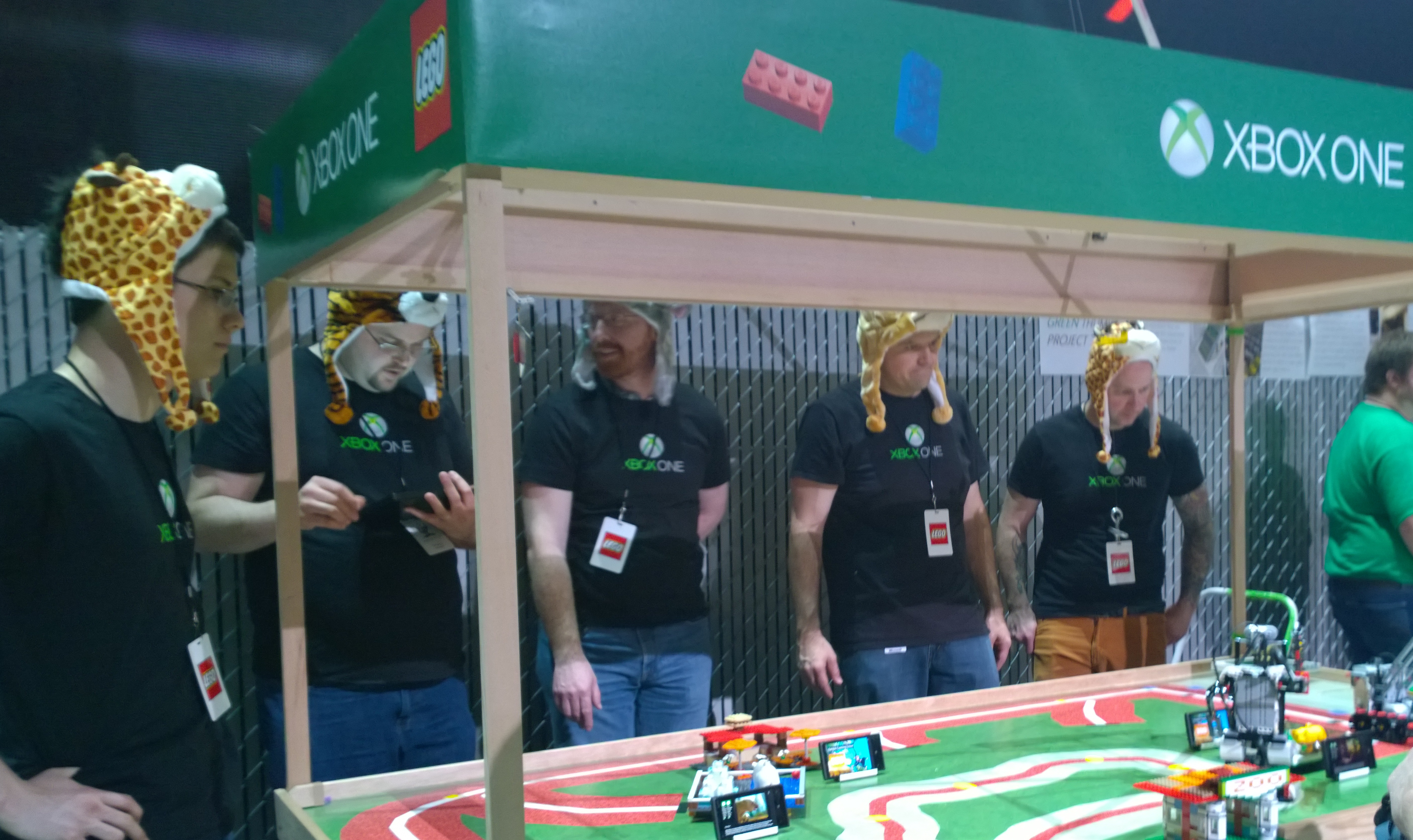
Silly Hats, Serious Zookeepers: Team Xbox Builds for Good
Troy Barnes wore a furry yellow-and-white monkey hat into battle last Thursday night. His five-man team, all Microsoft employees, all of them wearing animal-themed hats promoting Zoo Tycoon, had taken LEGO up on its challenge to build for good.
LEGO’s Build For Good contest played out at Seattle’s EMP Museum Thursday night. Seven companies (among them Amazon, Expedia, and Nordstrom) were tasked with using LEGO’s Mindstorms EV3 to build robots that would address everyday problems.
Barnes and company built a working, automated, and 3D version of “Zoo Tycoon.” Their display featured robots ZETA and ECHO (Zookeeper Extraordinaire Technical Assistant and Exhibit Crate Hauling Overseer, respectively) dropping exhibits into place and ensuring the animals were all pellet-fed.
Team Xbox won a special commendation for creating the most entertaining robot, and Barnes was more than willing to talk about his team’s effort.
Xbox Wire: Under sort of what guidelines did you guys operate?
Troy Barnes, Quality Assurance Engineer, Microsoft: We were given this mantra of “build for good.” And we weren’t quite sure what the build for good theme was about. We kind of interpreted it loosely. We were kind of like, “Build for good? Is that good robots? Good fun?” And it wasn’t themed “for the good of humanity.”
We took it and ran with it. We were looking for what is something that’s really good and really awesome that we can do to exhibit Microsoft and Xbox and Windows and all of our stuff — to showcase how Microsoft can make technologies to make LEGOs even more fun.
The “build for good” part of it, we got into as we were going along. We realized that children who are disabled that can’t role-play with toys like we did when we were kids, and [Team Microsoft’s project] is kind of a cool way to interact with toys and role-play. You can use the remote control, and you can control the different robots to do your zoo-building for you. So we kind of looked at this as a disabled kid’s way to role-play with the toys — that’s our “build for good” solution.
Xbox Wire: How long did it take you to build the “Zoo Tycoon” display?
Troy: We had one guy who was leading the charge on the display, and I’m guessing he spent 30 hours on the display portion alone. We all individually pitched in and helped draw the map and some of that sort of stuff. We probably put in another 10 hours on top of that.
Xbox Wire: Can you give us some insight into how the creative process worked?
Troy: We’re Team Xbox. We had to do something related to Xbox, and we had to do something cool. We wanted to bring an Xbox game to life.
In the end, we settled on “Zoo Tycoon.” It was something Microsoft owns the rights to, and that we had the art for. So then we were like, “OK, what can we do with this that’s good for humanity?” At no point did we ever stop and say, “No, that’s it.” We still have a list of 50 things that we still want to do [with it].
Xbox Wire: What’s impressed you the most about this event?
Troy: I am most impressed with the spirit of the event. Some of these teams really embodied the whole “build for good” [theme] — taking on world hunger and solving some really crazy real-world problems. I loved the practical application some of these ’bots demonstrate.
Xbox Wire: Did the animal-themed hats add to, or detract from, the creative process?
Troy: [Laughing] Those were a last-minute addition.
Xbox Wire: People tend to be wary of technology. Why do you think that’s so?
Troy: I see it with kids. When I teach kids about robots — I mentor kids with robot teams — I’m aware of their schools, and I talk to some of their teachers. I get a lot of teachers who are technology-phobic or technologically unaware. The kids end up knowing more than the teachers a lot of the times.
I’ve seen teachers send out emails to talk about an advanced math class. They make it sound like it’s scary. And I feel like they’re just kind of afraid of it all. And the reason for doing something like this is to say, “Hey! The kids are doing it. These kids build robots that do amazing things, and they get it. It’s not that scary, it’s doable — and we want to see more people doing it.”
